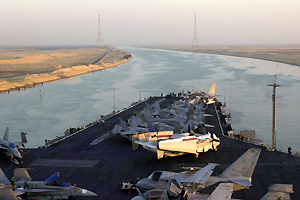Geographical features
Antarctica is shaped more or less like a circle. It is split into West or Lesser Antarctica and East or Greater Antarctica. Both areas are partially separated by a fissure called the Antarctic Belt, between the Weddell and Ross seas.
West Antarctica has a really bumpy relief and its coastline is jagged as well. It is made up of sedimentary rock that has been joined since the Mesozoic and Cenozoic eras. In addition, this area has islands that are a prolongation of the Andes mountains, known as the Antartandes or Antarctic Andes.
East Antarctica is formed by an enormous flat plateau and Precambrian and Paleozoic rock. It also has mountains that reach up to 3,000 masl, as well as a few active volcanoes, such as Mount Erebus (4,023 masl).
The longest mountain range is the Transantarctic mountains and the highest peak is Vinson massif, part of the Antarctic Andes.
Between the Vinson and the Transantarctic mounts, there are intermediate mountain ranges, such as Pensacola and Ellsworth mountains. The Polar plateau rises as it nears the South Pole. Here, there is an attached mountain range almost completely covered by ice: the Gamburtsev mountain range.
Antarctic treaty
The great amount of explorations held in Antarctica raised interest among the world’s states for having a stake in this new continent.
Each state started giving different parts of land their own names. So, we Chileans call Tierra de O’Higgins (O’Higgins Land), what Argentineans call San Martin Land. The British call it Graham land and for the Americans it’s Palmer peninsula.
On November 1, 1959, the International Year of Geophysics, 13 countries: Argentina, Australia, Belgium, Chile, France, Japan, New Zealand, Norway, South Africa, USSR (present day Russia), the United Kingdom, Northern Ireland and the United States, all signed the Antarctic Treaty, which guarantees the peaceful use of this land, especially for developing joint scientific research missions. The treaty also laid the foundation for carrying out exchanges of information, scientific personnel, observations and results of scientific activities among all of the participating nations.
Last but not least, all military use of bases and weapons testing became strictly forbidden. This includes nuclear blasts and string radioactive material.
Chilean Antarctic Territory
On November 6, 1940, under the presidency of Pedro Aguirre Cerda, decree 1,747 was passed. It established the borders of Chilean Antarctic Territory. This document establishes the “Chilean Antarctica or Chilean Antarctic Territory includes all of the land, islands, islets, reefs, glaciers, pack ice and so forth, known and unknown, as well as the area’s respective territorial sea, all included within the icepack located between the 53º and 90º western longitude meridians.
This territory has 1,250,000 km2 of surface, which is completely covered (except for a few small patches along the shore) by a thick layer of ice and snow. It mainly consists of a portion of West or Lesser Antarctica, including the Antarctic peninsula, known as Tierra de O’Higgins (O’Higgins Land) in Chile. It is longitudinally crossed by the Antarctic Andes (the continuation of the Andes).
It also spans the south Shetland islands, the Antarctic peninsula and its adjacent islands, Alexander I island, Charcot island, part of Ellsworth Land, and other small islets. Also on Chilean soil, in the south east portion of the Antarctic territory, you can find the highest peaks on the Antarctic continent, part of the Sentinel range: Vinson massif (4,897 masl), mount Tyree (4,852 masl) and mount Shinn (4,800 masl).
Administratively, Chilean Antarctic Territory is part of the Chilean Antarctic province of the Region of Magallanes y la Antartica Chilena (Chilean Antarctica).
Chile presently has several bases within this territory, most of which are under the charge of Armed Forces (Navy) personnel. The most populated area is located on King George island. It consists of Presidente Eduardo Frei Montalva Airbase, which was called Eduardo Frei Meteorological Center, and Villa Las Estrellas (est. 1984).
The Chilean Antarctic Institute (Inach), a branch of the Ministry of Foreign Affairs, inaugurated Professor Julio Escudero Base in 1994. It is the main scientific research center on the island. On Greenwich island, there is another Chilean base called Capitan Arturo Prat. This is the oldest Chilean base in the area (February 6, 1947). Since 1991, Shirreff base –an Inach project- has been active on Livingstone island. General Bernardo O’Higgins island has been on Isabel Riquelme islet since 1948 and Luis Risopatron Base has been on Robert island since 1949.







